The ice is right Since Jets’ return in 2011, home rink’s playing surface consistently ranks in NHL’s top 5
Read this article for free:
or
Already have an account? Log in here »
To continue reading, please subscribe:
Monthly Digital Subscription
$0 for the first 4 weeks*
- Enjoy unlimited reading on winnipegfreepress.com
- Read the E-Edition, our digital replica newspaper
- Access News Break, our award-winning app
- Play interactive puzzles
*No charge for 4 weeks then price increases to the regular rate of $19.00 plus GST every four weeks. Offer available to new and qualified returning subscribers only. Cancel any time.
Monthly Digital Subscription
$4.75/week*
- Enjoy unlimited reading on winnipegfreepress.com
- Read the E-Edition, our digital replica newspaper
- Access News Break, our award-winning app
- Play interactive puzzles
*Billed as $19 plus GST every four weeks. Cancel any time.
To continue reading, please subscribe:
Add Free Press access to your Brandon Sun subscription for only an additional
$1 for the first 4 weeks*
*Your next subscription payment will increase by $1.00 and you will be charged $16.99 plus GST for four weeks. After four weeks, your payment will increase to $23.99 plus GST every four weeks.
Read unlimited articles for free today:
or
Already have an account? Log in here »
Hey there, time traveller!
This article was published 18/04/2025 (217 days ago), so information in it may no longer be current.
The National Hockey League Players’ Association’s annual anonymous player poll was unveiled on April 15, two days before the end of the regular season.
In addition to “who is the best overall player?” (the Pittsburgh Penguins’ Sidney Crosby) and “which player has the best fashion sense?” (David Pastrnak of the Boston Bruins), one of the questions posed was which of the 32 NHL arenas has the most ideal ice?
The votes have been counted and once again, the playing surface at Canada Life Centre was ranked No. 3 behind Montreal’s Bell Centre and Edmonton’s Rogers Place, an acknowledgment that isn’t taken lightly by Doug Neubauer, True North Sports + Entertainment’s director of engineering and ice operations.
“Ever since the Jets returned (in 2011) we’ve finished in the top five in the player poll and since I want to say 2016, we’ve always been in the top three, which is something we’re very proud of,” Neubauer says, seated in the bowels of the downtown venue, where the Jets will enjoy home-ice advantage for as long as the Presidents’ Trophy-winning club sticks around in this year’s Stanley Cup playoffs.
MIKE SUDOMA / FREE PRESS Director of engineering and ice operations Doug Neubauer monitors ice temperatures and other readouts from his control room during a recent game. 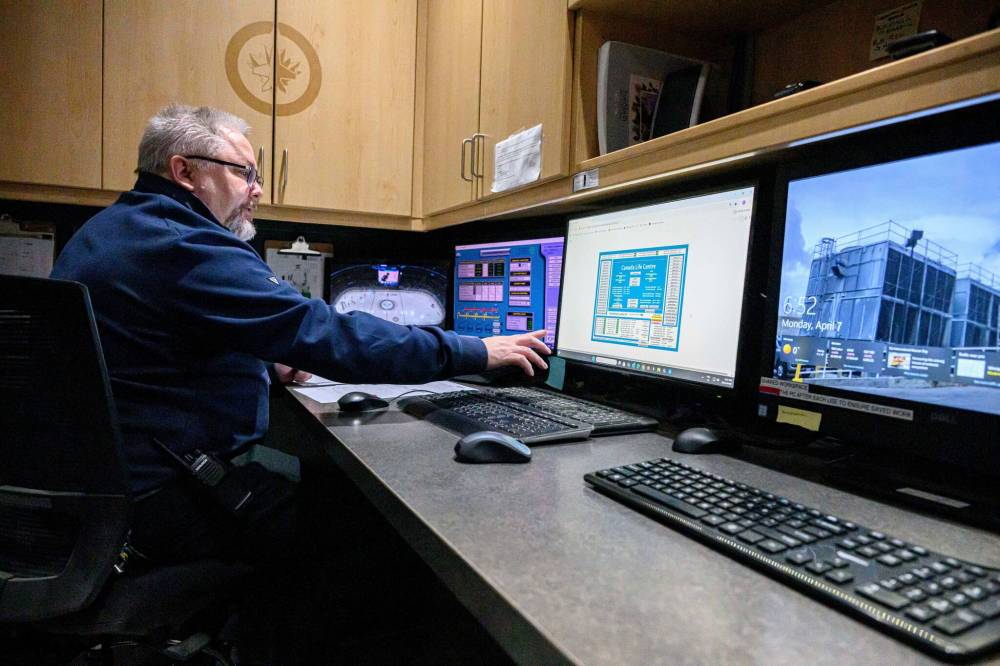
“I can’t tell you what the guys are looking for specifically but obviously consistency is key — that the ice holds up from period to period,” he continues, listing “glide” — how much friction a player senses on their skate blades when they’re darting to and fro — as another factor he hears about from NHLers.
“We hold ourselves to a very high standard here, trying to achieve the best ice at all times, whether it’s a pre-game skate or a playoff game, and I believe that’s what’s given us success in these polls. Players know that when they come to Winnipeg, they’re going to have a great sheet to skate on.”
Although skilfully manoeuvring an ice resurfacer — members of Neubauer’s full-time, seven-member ice-operations crew refrain from using the term “Zamboni” — is the most visible part of the job, that’s just a fraction of what they do, says Jared Sinninghe, who started working for True North in 2007 at age 23, back when the Manitoba Moose were the rink’s lone hockey tenant.
Creating and maintaining a professional-calibre sheet of ice for months on end is a continuous process, Sinninghe says, noting while one doesn’t need a special licence to drive an ice resurfacer, those in his line of work do require Red Seal accreditation, similar to a plumber or welder, to help operate an ice-plant system comprised of 250 tonnes of refrigeration equipment.
“I often compare it to leaving an ice cube in your freezer for three months and then seeing what that looks like, how cloudy it gets,” he explains, pointing out that like his co-workers, he got his start at a community club rink, in his case Gateway Recreation Centre.
“The ice here is a living, breathing thing — it moves, it dries out — and you have to keep on top of it at all times. We run an inch-and-a-half of ice, give or take, from the concrete and if we have enough time, there are occasions when we’ll peel the ice right down and build it back up again.”
MIKE SUDOMA / FREE PRESS Dave Wright is the senior crew member in Winnipeg and one of the longest-serving ice engineers in the NHL. 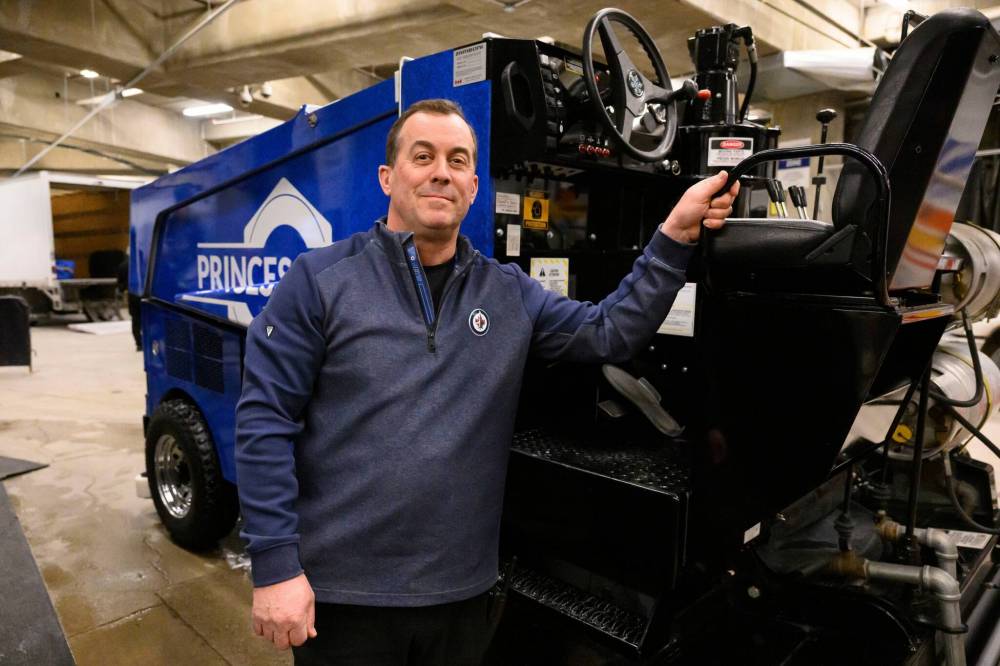
Not only is Dave Wright, 58, the local crew’s senior member, he is one of the longest-serving ice engineers in the NHL. He chuckles, saying things were much different when he was hired at the Winnipeg Arena in the late 1980s, during the Jets 1.0 era.
“I come from a time when fans could smoke in the building, and I remember the effect that had on the playing surface,” says Wright, who cites sporting a tuxedo while flooding the ice between periods of the Jets’ annual black-tie affairs versus the Montreal Canadiens as a career highlight. That and being assigned to paint the locker of former Jets star Teemu Selanne.
“Also, that was back when there was only one (Zamboni) driver,” he goes on, mentioning that he immediately caught on with the then-International Hockey League’s Moose after the Jets left for Arizona in 1996.
“They eventually changed that to two drivers — mainly to speed things up so they could have more in-game, on-ice promotions — but there were definitely nights when I’d hear it from a person in the crowd if I missed a spot.”
MIKE SUDOMA / FREE PRESS Zamboni Operator Dave Wright preps the ice on his Zamboni prior to the start of the first period of the St Louis Blues and Winnipeg Jets game at Canada Life Centre Monday night.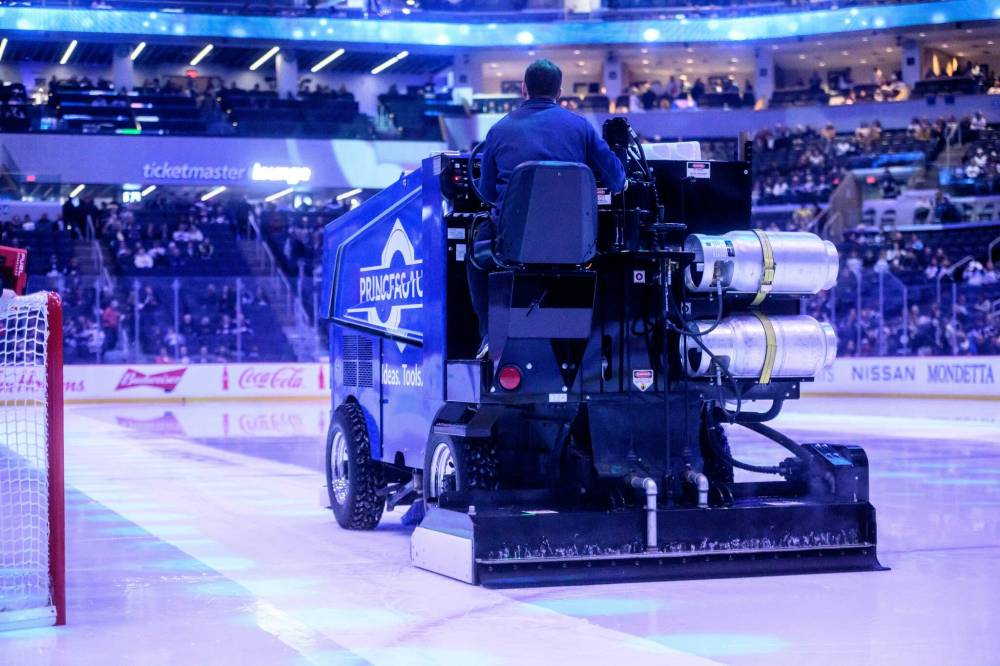
If puck-drop is scheduled for 7 p.m., a typical game day goes something like this, Neubauer says.
There are two shifts, the first running from 7 a.m. to 5 p.m., and another going from 2:30 p.m. to 12:30 a.m. — later if a playoff tilt results in multiple overtime sessions, as was the case on May 21, 2021, when Kyle Connor scored the game and series winner at 1:06 a.m. local time, during the third overtime period of a first-round match against the Edmonton Oilers.
After ensuring everything is running smoothly on the mechanical end, one of them will measure the temperature and thickness of the ice before performing what they call a dry shave to remove any debris, especially if there was a concert the previous evening, which usually results in spilled drinks seeping through the protective floorboards.
They’ll shave and flood the ice before and after each team’s morning skate, and again at around 3:30 p.m., to get rid of footprints left behind by those assigned to polish the glass and dashboards.
“We’ll put another flood down around 5:30 (p.m.), 30 minutes before the doors open to the public, and of course, one more after the teams have gone through their pre-game warm-up,” Sinninghe says.
MIKE SUDOMA / FREE PRESS Members of Truth North’s ice operations crew get the surface ready in advance of the regular-season tilt against the St. Louis Blues earlier this month.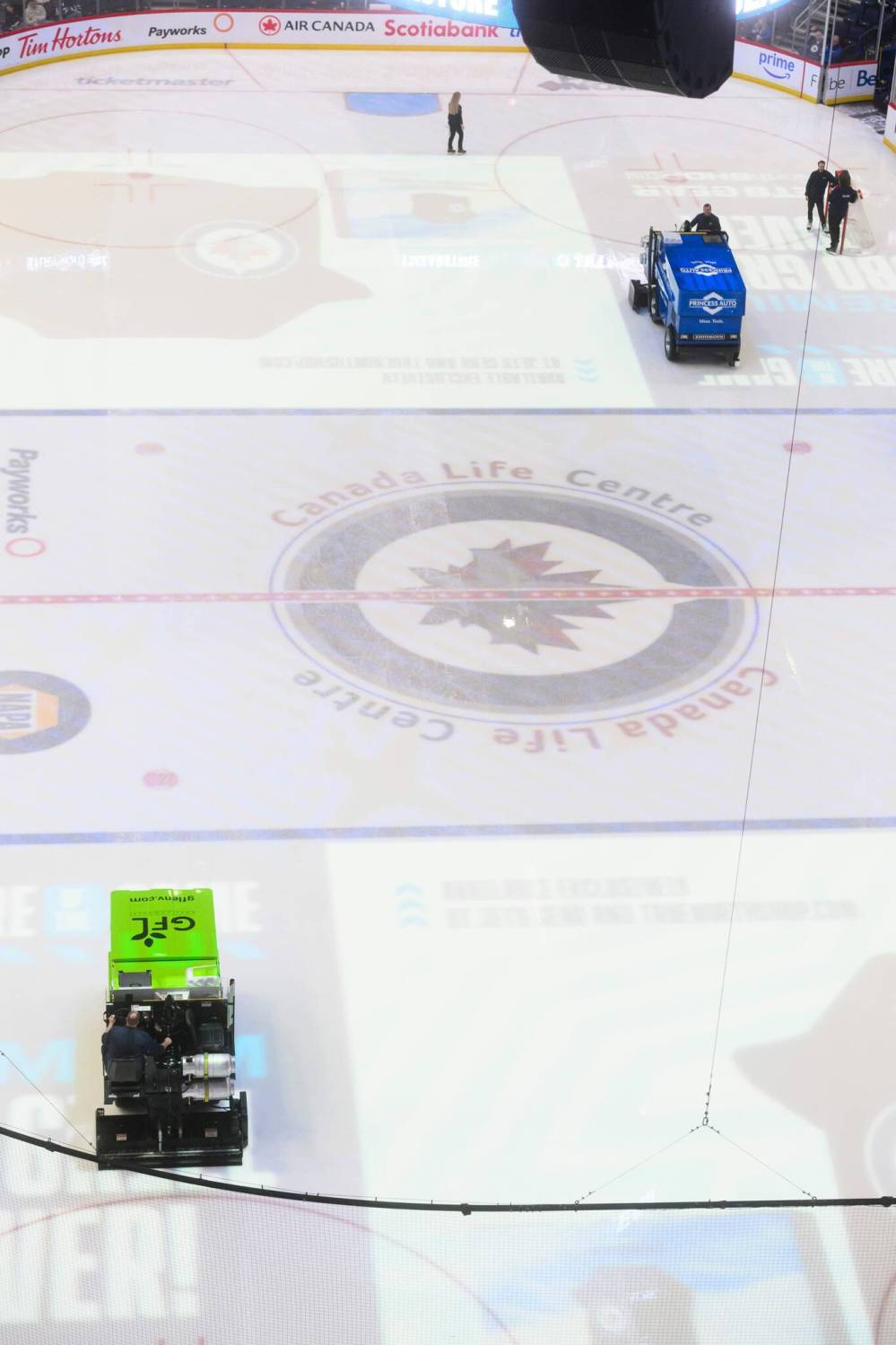
Although they would love to be able to kick back and enjoy the action once the game gets going, that definitely isn’t the case, Wright pipes in. Besides attending to the ice resurfacers by dumping the collected slush and whatnot into a deep trough located in the southwest corner, they all need to keep their eyes open for occurrences such as if a player frustratingly slams his stick onto the ice after missing an open net, possibly chipping the surface in the process.
“Or sometimes we’ll notice a puck taking an odd bounce in the neutral zone or along the boards, resulting in a scoring chance that wouldn’t normally occur,” Sinninghe says. “We take those sorts of things very seriously and if it’s something we can address during a TV timeout, we’re on it.”
Back to the player poll, Sinninghe says there is actually a pretty thin line between what’s deemed to be the best and least favourable ice in the league. Whereas individual crews used to keep the secret to their successes to themselves, they now have a summertime conference that brings representatives from all 32 NHL teams together, to compare notes and talk shop for a few days.
“We have this big network now where if somebody in, say, Raleigh or Buffalo has a monster-truck or Disney (on Ice) show coming through, and is worried what that’s going to do to their ice, they can reach out to the rest of us in an email thread and, sure as heck, somebody else will have dealt with that type of problem before,” he says.
MIKE SUDOMA / FREE PRESS A member of the ice crew examines the freshly resurfaced ice before puck drop.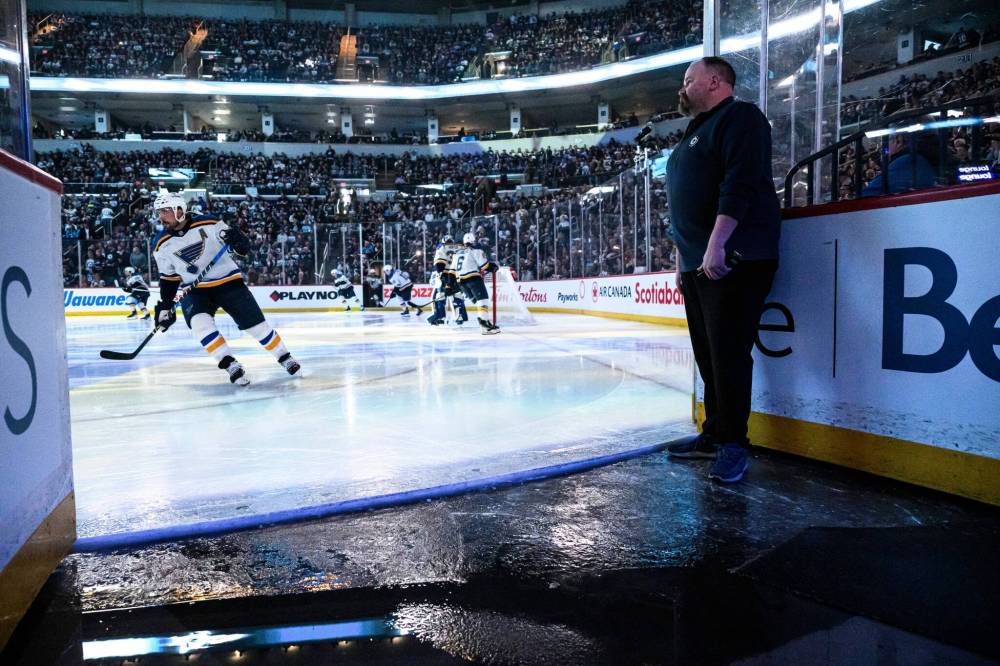
Sinninghe notes another oft-discussed dilemma that occurs right here in Winnipeg, where “you have to be a meteorologist almost,” to deal with the fluctuations in outdoor temperatures between October and — fingers crossed — late June, which can definitely have a ripple effect on what’s happening inside the rink.
“This time of year we’re challenged by high dew points, high humidity… and trying to cool the building while it’s still warm outside.”
Neubauer feels it is the dream of every child who grows up playing hockey in Canada to eventually make it to the NHL. And although his own skills were “few and far from getting there as a player,” he thinks he can speak for his co-workers when he states how fortunate they are to have achieved that goal, albeit in another capacity.
“The way we look at it, we have to do our job to the best of our ability so the players can do theirs.”
david.sanderson@freepress.mb.ca
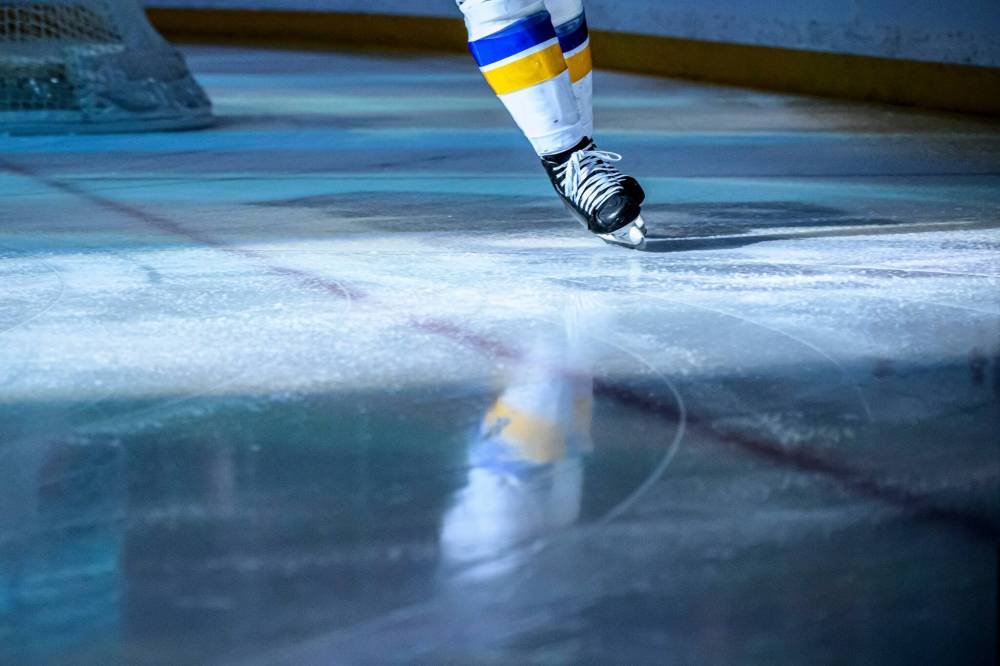
MIKE SUDOMA / FREE PRESS
Visiting teams have long praised the condition of the ice surface in Winnipeg.
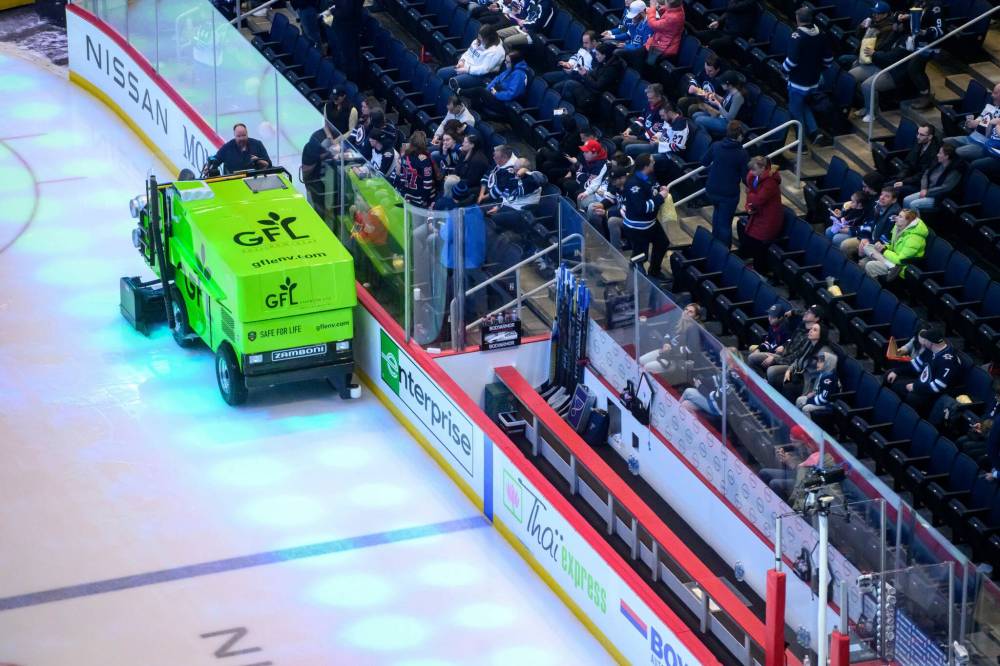
MIKE SUDOMA / FREE PRESS
Zamboni operator Chucky clears the ice in between periods at Canada Life Centre Monday night.
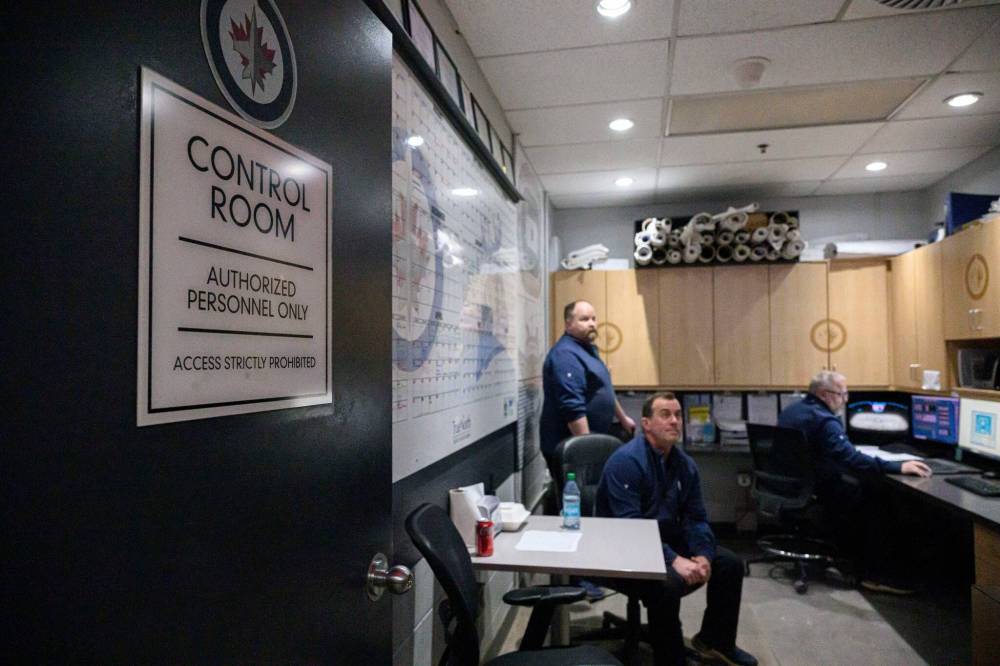
MIKE SUDOMA / FREE PRESS
Crew members closely monitor ice temperatures and other data points during the game and keep an eye out for chips and bumps in the ice that may need to be addressed between periods.
Dave Sanderson was born in Regina but please, don’t hold that against him.
Our newsroom depends on a growing audience of readers to power our journalism. If you are not a paid reader, please consider becoming a subscriber.
Our newsroom depends on its audience of readers to power our journalism. Thank you for your support.






